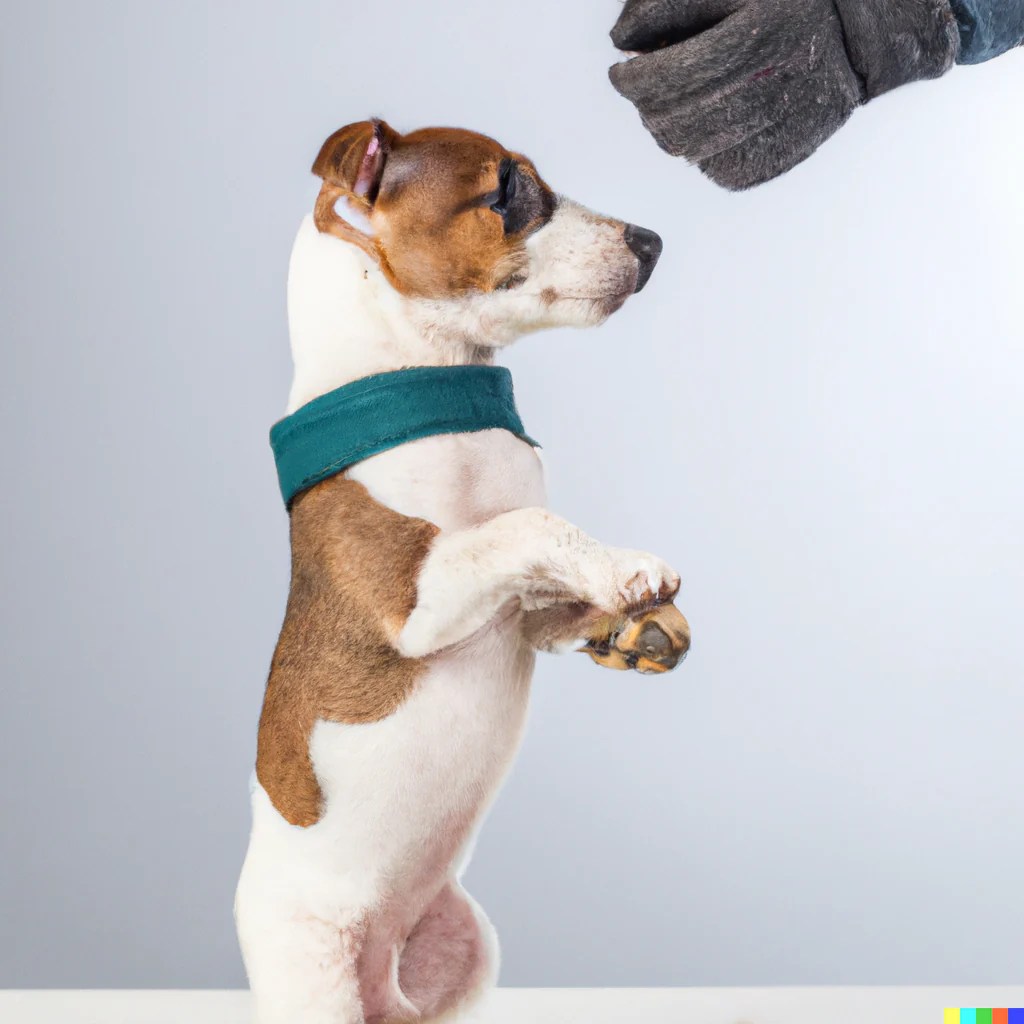
Embark on a journey to uncover the secrets of training your beloved pet at home. From basic techniques to troubleshooting challenges, this guide will equip you with all the tools you need for a successful training experience. Get ready to strengthen the bond with your furry friend like never before!
Overview of Pet Training

Training your pet at home is crucial for their overall well-being and your peace of mind. It helps in setting boundaries, teaching important commands, and preventing behavioral issues. By training your pet independently, you can tailor the training sessions to suit your pet’s unique needs and pace, leading to more effective results. Additionally, training your pet can strengthen the bond between you and your furry friend, creating a harmonious and fulfilling relationship based on trust and communication.
Benefits of Pet Training
- Improved behavior: Training helps in correcting unwanted behaviors and encouraging positive ones, making your pet a well-mannered companion.
- Enhanced safety: Teaching commands like “come” and “stay” can prevent your pet from getting into dangerous situations.
- Strengthened bond: Spending quality time training your pet fosters a deeper connection and mutual understanding between you and your furry friend.
- Mental stimulation: Training activities engage your pet’s mind, preventing boredom and promoting mental sharpness.
Basic Training Techniques
Training your pet at home can be a rewarding experience for both you and your furry friend. Here are some basic training techniques to get you started:
Teaching Commands
- Start with simple commands like sit, stay, and come. Use treats or toys as positive reinforcement when your pet follows the command correctly.
- Be patient and consistent in your training. Repeat the commands regularly and reward good behavior every time.
- Use a firm but gentle voice when giving commands. Avoid yelling or using harsh tones as this can confuse or scare your pet.
Positive Reinforcement
- Positive reinforcement is a key component of effective training. Reward your pet with treats, praise, or playtime when they exhibit the desired behavior.
- Avoid punishment or scolding when your pet makes a mistake. Instead, redirect their behavior and reward them when they get it right.
- Consistency is key when using positive reinforcement. Make sure everyone in the household follows the same training methods to avoid confusion for your pet.
Consistency in Training
- Consistency is crucial in pet training. Establish a routine and stick to it to help your pet understand what is expected of them.
- Practice training sessions regularly, but keep them short and engaging to prevent boredom or frustration for your pet.
- Reinforce good behavior consistently and address any issues promptly to prevent them from becoming habits.
Understanding Your Pet’s Behavior

When it comes to training your pet, understanding their behavior is key to successful training sessions. By observing and interpreting your pet’s body language, you can better communicate with them and address any behavioral issues that may arise.
The Importance of Observing Your Pet’s Body Language
- Pay attention to your pet’s facial expressions, tail movements, and overall posture to gauge their mood and level of comfort.
- Look for signs of stress, fear, excitement, or relaxation to tailor your training approach accordingly.
- Understanding your pet’s body language can help prevent miscommunication and build a stronger bond between you and your furry friend.
Common Behavioral Issues and Training Solutions
- Aggression: Address aggressive behavior by identifying triggers, providing positive reinforcement for calm behavior, and seeking professional help if needed.
- Separation Anxiety: Help your pet overcome separation anxiety by gradually desensitizing them to being alone, creating a safe space, and establishing a routine.
- Excessive Barking: Reduce excessive barking through distractions, positive reinforcement for quiet behavior, and addressing any underlying reasons for the barking.
Training Different Types of Pets
When it comes to training different types of pets at home, it’s important to understand that each animal has its own unique characteristics and behaviors. Tailoring your training methods to suit the specific needs of your pet will lead to more successful outcomes.
Training Dogs at Home
- Start with basic commands such as sit, stay, and come. Use positive reinforcement techniques like treats and praise to reward good behavior.
- Consistency is key. Set a routine and stick to it to help your dog understand what is expected of them.
- Use a firm but gentle tone when giving commands. Avoid yelling or using harsh punishment as this can lead to fear and anxiety in your dog.
- Consider enrolling your dog in obedience classes for more advanced training and socialization opportunities.
Training Cats in a Home Environment
- Use interactive toys and treats to engage your cat during training sessions. Cats respond well to play-based learning.
- Utilize clicker training to reinforce positive behaviors and establish clear communication with your cat.
- Provide scratching posts and other outlets for natural cat behaviors to prevent destructive habits.
- Be patient and understanding, as cats may take longer to learn commands compared to dogs.
Training Other Pets like Birds, Rabbits, or Reptiles
- Research the specific needs and behaviors of the pet species you are training. Tailor your training methods accordingly.
- Use positive reinforcement techniques like treats or favorite foods to encourage desired behaviors in birds, rabbits, or reptiles.
- Establish a consistent training schedule to help your pet understand expectations and build trust with you as their trainer.
- Consider seeking guidance from experienced owners or animal behavior experts for specialized training tips for non-traditional pets.
Creating a Training Routine
Establishing a consistent training routine is essential for the progress and success of your pet’s training. It provides structure, helps your pet understand what is expected, and fosters a positive learning environment.
Setting a Training Schedule
- Set specific times each day for training sessions to create a routine.
- Keep the training sessions short and engaging to maintain your pet’s focus.
- Choose a quiet and distraction-free environment for training to reduce interruptions.
Setting Achievable Goals
- Break down the training goals into smaller, achievable steps to prevent frustration for both you and your pet.
- Track your pet’s progress and celebrate small victories along the way to keep motivation high.
- Adjust the goals as needed based on your pet’s pace and abilities to ensure success.
Importance of Patience and Positive Reinforcement
Patience is key when training your pet, as learning new behaviors takes time and consistency. Positive reinforcement, such as treats, praise, and rewards, helps to motivate your pet and strengthen the desired behaviors. Remember to remain calm, patient, and encouraging throughout the training process to build a strong bond with your pet and achieve lasting results.
Troubleshooting Training Challenges
When training your pet at home, you may encounter various challenges that can hinder the progress of their training. It’s important to be prepared to address these obstacles effectively to ensure successful training sessions. Here are some common issues you may face and strategies to overcome them.
Dealing with Distractions
Distractions can be a major challenge during training sessions, especially if your pet is easily excited or curious about their surroundings. To address this issue, start training in a quiet and familiar environment to minimize distractions. Gradually introduce distractions as your pet becomes more focused and responsive to commands. Use positive reinforcement techniques to keep your pet engaged and motivated during training.
Adapting Training Techniques
Every pet is unique and may respond differently to training methods. If you notice that your pet is not making progress or seems disinterested, it’s important to adapt your training techniques accordingly. Try using different cues, rewards, or training tools to see what works best for your pet. Be patient and consistent in your approach, and always observe your pet’s behavior to determine the most effective training strategy.
Overcoming Behavioral Challenges
Some pets may exhibit behavioral challenges such as fear, aggression, or stubbornness during training. It’s essential to address these issues with care and patience. Seek advice from a professional trainer or behaviorist if needed to develop a customized training plan for your pet. Use positive reinforcement and avoid punishment-based techniques to build trust and strengthen the bond with your pet.
Safety Measures in Pet Training
When training your pet at home, it is crucial to prioritize their safety to ensure a positive and effective training experience. By implementing the following safety measures, you can create a secure environment for your pet to learn and thrive.
Proper Equipment and Tools
- Always use appropriate training tools and equipment designed for your pet’s size and breed to prevent any accidents or injuries.
- Ensure that collars, harnesses, leashes, and training aids are in good condition and properly fitted to avoid discomfort or choking hazards.
- Choose positive reinforcement tools like treats and toys to motivate and reward your pet during training sessions.
Supervision and Monitoring
- Never leave your pet unattended during training sessions to prevent them from getting into potentially dangerous situations.
- Stay alert and observant of your pet’s behavior to address any signs of stress, fear, or aggression immediately.
- Keep a close eye on your pet when introducing new training exercises or techniques to ensure their safety and well-being.
Training Wild Animals
When it comes to training wild animals, there are significant differences compared to training domestic pets. Wild animals have different instincts, behaviors, and needs that must be taken into consideration when developing a training program. Ethical considerations are also crucial when working with wild animals, as their natural habitat and well-being must always be a top priority.
Specialized Techniques for Training Wild Animals
When working with wild animals, professionals often employ specialized techniques to ensure effective training while maintaining the animal’s welfare. Here are some common techniques used:
- Positive Reinforcement: Using rewards like treats, toys, or praise to encourage desired behaviors.
- Desensitization and Counterconditioning: Gradually exposing the animal to stimuli that may cause fear or anxiety, paired with positive experiences to change their emotional response.
- Target Training: Teaching the animal to touch a specific target to guide their behavior and movements.
- Clicker Training: Pairing a clicker sound with a reward to mark desired behaviors for quick learning.
It is essential to approach training wild animals with respect for their natural instincts and behaviors, always prioritizing their well-being.
Training Livestock
Training livestock at home can be a rewarding experience that enhances the bond between you and your animals. Establishing trust and effective communication are key components in successfully training livestock, whether it’s for handling, management, or performance purposes.
Examples of Livestock Animals for Training:
- Cows
- Sheep
- Goats
- Pigs
- Chickens
Tips for Establishing Trust and Communication:
- Start training at a young age to build a strong foundation.
- Use positive reinforcement such as treats or praise to reward desired behaviors.
- Be patient and consistent in your training approach.
- Learn to understand your livestock’s body language and cues.
Benefits of Training Livestock:
- Improved handling for tasks like grooming, milking, or medical procedures.
- Better management of livestock in terms of behavior and obedience.
- Enhanced performance in activities such as showing, agility, or obedience competitions.
Training Exotic Animals
Training exotic animals at home can be a unique and rewarding experience, but it also comes with its own set of challenges and considerations. These animals have specific needs and behaviors that must be taken into account during the training process. It is crucial to understand the legal aspects and regulations surrounding the ownership and training of exotic pets to ensure the safety and well-being of both the animals and their owners.
Specialized Training Methods for Exotic Pets
- Positive Reinforcement: Using rewards such as treats, toys, or praise to encourage desired behaviors in exotic animals.
- Clicker Training: Utilizing a clicker to mark the desired behavior and then rewarding the animal accordingly.
- Target Training: Teaching exotic pets to touch or follow a target stick to perform specific actions or movements.
- Desensitization: Gradually exposing the animal to stimuli that may cause fear or anxiety to help them overcome their phobias.
Final Summary
In conclusion, training your pet at home is not just about teaching tricks; it’s about building trust and understanding. By following the tips and techniques Artikeld in this guide, you’ll be on your way to a harmonious relationship with your pet. Start training today and watch your bond grow stronger every day!
Key Questions Answered
How do I deal with a pet that is not responding to training?
If your pet is not responding, try changing up the training methods or seek professional help for specialized guidance.
Is it possible to train exotic pets like monkeys or big cats at home?
Training exotic animals requires specialized knowledge and may have legal restrictions, so it’s essential to research and consult experts before attempting it.
What should I do if my pet gets distracted during training sessions?
Try to eliminate distractions in the training environment and use high-value treats to regain your pet’s focus during sessions.





